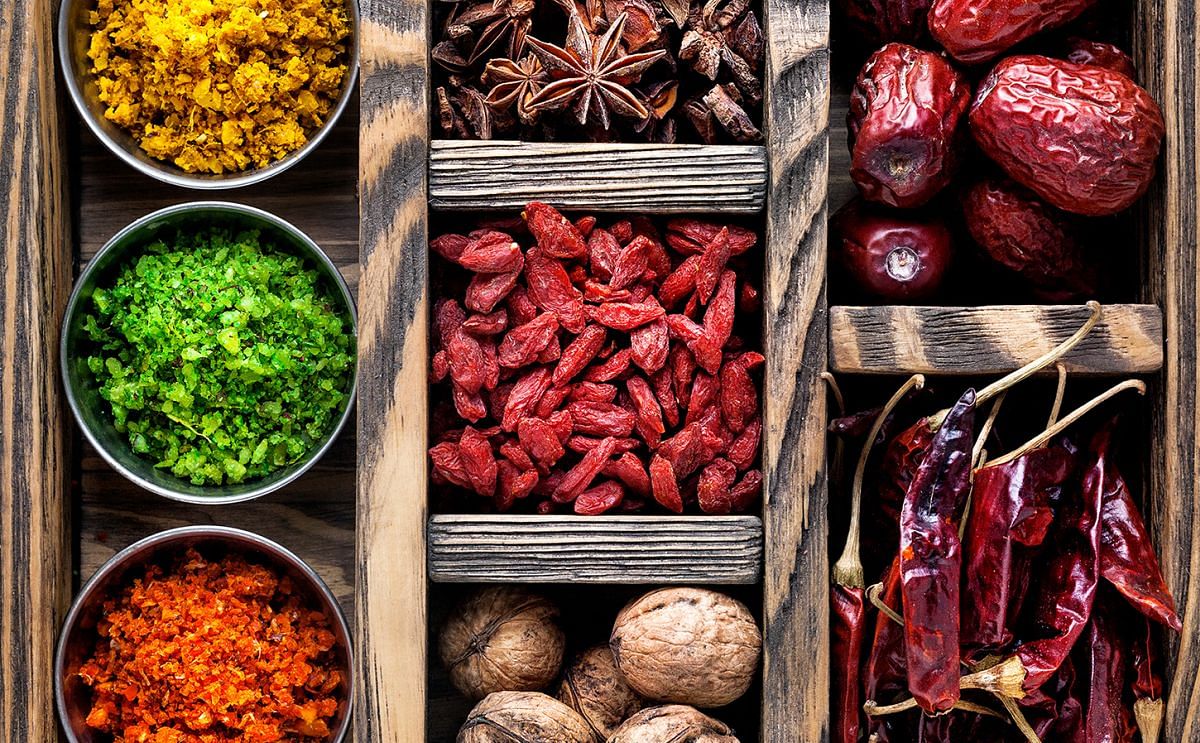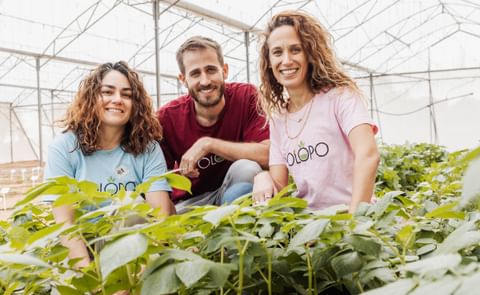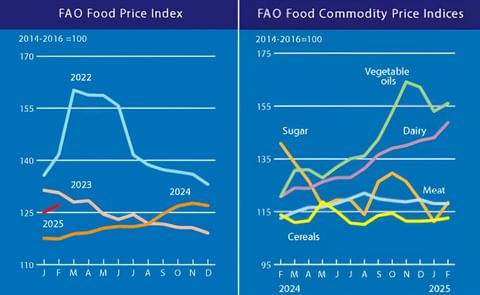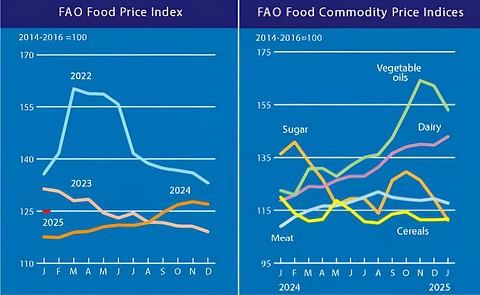Givaudan Flavors exec flags wellness, affordability and digitalization as key concepts for the Middle East and Africa.
Givaudan Flavors exec flags wellness, affordability and digitalization as key concepts for the Middle East and Africa

Health and wellness have been top of mind for many European and US consumers for some years, but now, this is also becoming a key theme in the Middle East and Africa. This is according to Antoine Khalil, Givaudan’s Regional Head for Flavors in Africa and the Middle East.
The flavor giant is responding to these trends in the region, as well as the challenges they raise as Middle Eastern and African food trends and flavors come into the spotlight.
Speaking to FoodIngredientsFirst, Khalil highlights that Givaudan is proactively invested in in finding taste solutions to support the journey of health and wellness in these regions. This includes reducing sugar, salt and fat.
Antoine Khalil, Givaudan’s Regional Head for Flavors in Africa and the Middle East:
“For example, in August, the UAE Cabinet announced that the UAE would apply a 50 percent excise tax on sugar-sweetened beverages (SSBs), as consumers in the region become more aware of the dangers of eating unhealthily.”Moreover, affordability in these regions is a significant concern, with many having low household incomes.
“If you look at Africa in terms of quality and ensuring that the true heritage and tastes of products are maintained, you still need to be competitive in terms of pricing.”
“The income of households is not as high compared to households in the UAE, Qatar or Saudi Arabia.”
Affordability is significant in Africa, and Givaudan is investing in this space. This is not only in terms of technology, but also in terms of taste to be able to offer consumers flavors that are authentic to their heritage, he affirms.

Antoine Khalil, Givaudan’s Regional Head, Flavours, Africa Middle East.
These are proprietary hardware and software technologies that allow people to engage directly with the equipment and smell aromas.
Antoine Khalil:
“This allows us to get closer to the consumers and understand their needs. They can enter our virtual kitchen and even become their own chefs.”Local herbs and spices
“Health and wellness, affordability and digitalization are the three most significant trends we are seeing in these regions currently.”
While many herbs and spices are culturally well-known and grown locally in the region, Khalil highlights that there are some standout flavors for the coming year.
Khalil:
“One that stands out is Moringa oleifera, which traditionally comes from the African continent. It is also grown in Latin America and it’s one ingredient to watch.”Then there is turmeric, which is a trendy ingredient thanks to its anti-inflammatory status.
“Moringa is seen more and more in beverages, touted as having excellent antioxidant properties.”
“Turmeric came to Africa from the Indian subcontinent.”
“It was brought by people who traveled or emigrated there many years ago.”
“Traditionally, hibiscus has been consumed as a tea, and nowadays it is seen more frequently in different beverages. This is to prevent hypertension and to lower blood sugar, for example.”
“Ginger is also one to watch; it is very well-known globally to relieve nausea and strengthen immunity.”
“The baobab tree, also known as ‘the tree of life,’ can store large amounts of water and survive in drought. In Africa, local people use this tree for everything – for food, shelter and clothing. It has a lot of benefits and is becoming more popular as an ingredient for our partners who are manufacturing beverages in the region.”
Another ingredient that is known locally in Africa is baobab. According to Khalil, baobab is an emerging ingredient, which is popping up more frequently in NPD.

Using dates as an ingredient is not an emerging trend, it’s more of a growing trend, says Khalil.
Khalil also highlights the desire and need for dates, both on its own or used as an ingredient.
Using dates as an ingredient is not an emerging trend, it’s more of a growing trend, says Khalil.
Khalil:
“If you come to the Middle East, especially Saudi Arabia and the UAE, dates are a part of everyday life and culture. Many people start their day with dates and a glass of water or coffee and a date.”Savory snacking
“In fact, we are working on developing other ways of incorporating dates to gain traction outside of the traditional scope of the fruit.”
“Dates have been present in these regions for years; they have been passed down from generation to generation. There are a lot of combinations and uses for dates and the potential to intertwine with other ingredients. For example, mango juice and dates, offers all the benefits that dates are known to give to the body.”
“Dates are here to stay.”
The savory snacking market in the Middle East and Africa holds a lot of potential Khalil notes.
Historically, the four primary flavors that are known and loved by Middle Eastern consumers are tomato, cheese and onion, salt and vinegar, and salt. But for the past few years, Givaudan has been innovating with its partners and customers in the savory snacking space, developing local mixes, as well as fusion flavors, which boast international influences.
Many new launches in the snacking space are inspired by typical local herbs, such as za’atar. Givaudan has also been inspired by shawarma, also known as kebab, a dish in Middle Eastern cuisine consisting of meat cut into thin slices and roasted on a slowly-turning vertical rotisserie.
Khalil:
“It’s a market that is growing year after year. In Egypt and Saudi Arabia, in particular, there is a lot of innovation in snacking NPD.”Fusion flavors
“We have also been working on a jalapeno and cheese product, so there is a lot of innovation happening in this historic application space of snacks. Savory flavors have been used for years in the region, so we are working on bringing together these traditions and reinventing them in a way that is appealing to our customers in the regions.”
For Khalil:
“it’s all about heritage and sticking to the cultural roots. However, we are also more open to seeing what is happening outside of this and bringing these fusion flavors to the fore,”Consumers are well-traveled nowadays, so globalization has played a big part in the role of flavors. They want to get out of their safe comfort zones, and they are frequently curious to try new things, Khalil adds.
“There are a lot of bloggers and chefs in western countries who are good promoters of these cuisines. Fusion food combining east and west traditions is something that we can expect to see more of.”
“Many consumers are excited and open to seeing which exotic tastes and flavors are being brought to the table and how they differ from traditional flavors.”
“There is a good acceptance from an ingredient perspective to things that are local to these regions. In terms of dishes and culinary food, there will be a lot of experimentation going on in the foodservice space.”
“It’s a 360-degree approach to drive the development of new products and flavors with our customers – it’s a co-creation with them. We start with the consumers on the ground, that’s where the magic starts.”
Looking ahead, rich links to the culture and heritage in the Middle East and Africa will continue to drive innovation in this space.











